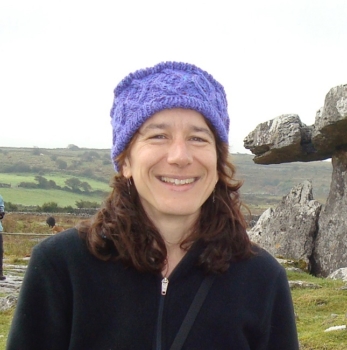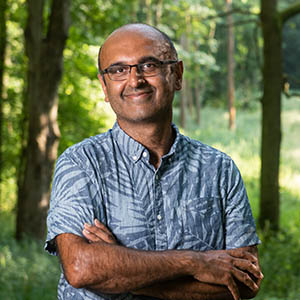Remote sensing Toolkit
Working across pristine and human modified temperate and tropical forest ecosystems to understand and generate new knowledge about their functionality, health and resilience.

About
We work across pristine and human modified temperate and tropical forest ecosystems to understand and generate new knowledge about their functionality, health and resilience. We contribute knowledge and tools for biodiversity positive and nature based solution analyses and aim at Increasing the positive impact of Earth Observation and ecological knowledge for evidence based policy making at local and global scale.
There is a tremendous need for understanding the state of our natural ecosystems. This need has been exacerbated due to the known decline in biodiversity and natural resources, in part due to Land use conversion, degradation of land and Ocean systems and climate change.
Although it is widely known that the terrestrial and ocean ecosystems are changing and tools have been developed to try to quantifying those changes we are still facing a lack of tools and indices that allow us to go beyond quantifying number of species, fragments, sizes and other spatial components towards finer structural, morphological and chemical aspects. Developing knowledge about the above highlighted aspects can improve our understanding about the processes of nature recovery and health of our ecosystems the process of nature recovery the process of nature recovery at small and large spatial extents.
We use Remote Sensing and in general Earth Observation as the science that quantifies aspects of an ecosystem without being in direct contact with it. Up to now we have mostly used remote sensing products to quantify discrete aspects of local and global areas, such as counting the number of fragments in a landscape, its connectivity, distance between fragments and sizes, and for characterizing land use and quantifying its changes. Besides generating those common landscape metrics we are also using satellite and UAV (unmanned aerial vehicles) remote sensing to bring a novel understanding on the structure, morphology and chemistry of land ecosystems across space and time. With our new approaches we are gaining a new understanding on ecosystem health, their paths to recovery and their resilience to global environmental change.
We use multi/hyperspectral and vegetation structure from LIDAR (light detection and ranging) sensors mounted in drones which imagine the landscapes at extremely high spatial and spectral resolution of a few centimetres. We also make use of state of the art satellite earth observation to extrapolate our local findings to the regional and global extents. We are currently specially working with the Copernicus constellation of Sentinel satellites from the European Space Agency (ESA) and the Landsat satellites and GEDI LiDAR (Global Ecosystem Dynamic Investigation) missions from NASA.
Projects
Theme outputs
- Society
- Scale and Technology
- Remote sensing
- Society
- Remote sensing
- Scale and Technology
- Awards
- Remote sensing
- Scale and Technology
- Society
- Awards
Zhang-Zheng H; Adu-Bredu S; Duah-Gyamfi A; Moore S; Addo-Danso SD; Amissah L; Valentini R; Djagbletey G; Anim-Adjei K; Quansah J (2024). Contrasting carbon cycle along tropical forest aridity gradients in West Africa and Amazonia.. Nature communications.
Tropical forests cover large areas of equatorial Africa and play a substantial role in the global carbon cycle. However, there has been a lack of biometric measurements to understand the forests’ gross and net primary productivity (GPP, NPP) and their allocation. Here we present a detailed field assessment of the carbon budget of multiple forest sites in Africa, by monitoring 14 one-hectare plots along an aridity gradient in Ghana, West Africa. When compared with an equivalent aridity gradient in Amazonia, the studied West African forests generally had higher productivity and lower carbon use efficiency (CUE).
Kumeh, Eric Mensah. (2023). How agroecology can help build dynamic cocoa agroforests in Ghana.. Agroforestry at work .
This article describes the transformative potential of agroecology as a beacon of hope for reestablishing balance in Ghana’s cocoa-forest mosaic landscapes. Agroecology — rooted in the principles of ecological harmony and sustainable agriculture — offers a way to revive and restore biodiversity, empower farmers and ensure a resilient and thriving future for cocoa farms.
Boonman, C.C.F., Serra-Diaz, J.M., Hoeks, S., Guo, W-Y., Enquist, B.J., , B., Malhi, Y., Merow, C., Buitenwerf, R., Svenning, J-C. (2024). More than 17,000 tree species are at risk from rapid global change.. Nature Communication.
Trees are pivotal to global biodiversity and nature’s contributions to people, yet accelerating global changes threaten global tree diversity, making accurate species extinction risk assessments necessary. To identify species that require expert-based re-evaluation, we assess exposure to change in six anthropogenic threats over the last two decades for 32,090 tree species. We estimated that over half (54.2%) of the assessed species have been exposed to increasing threats. Only 8.7% of these species are considered threatened by the IUCN Red List, whereas they include more than half of the Data Deficient species (57.8%). These findings suggest a substantial underestimation of threats and associated extinction risk for tree species in current assessments. We also map hotspots of tree species exposed to rapidly changing threats around the world. Our data-driven approach can strengthen the efforts going into expert-based IUCN Red List assessments by facilitating prioritization among species for re-evaluation, allowing for more efficient conservation efforts.








